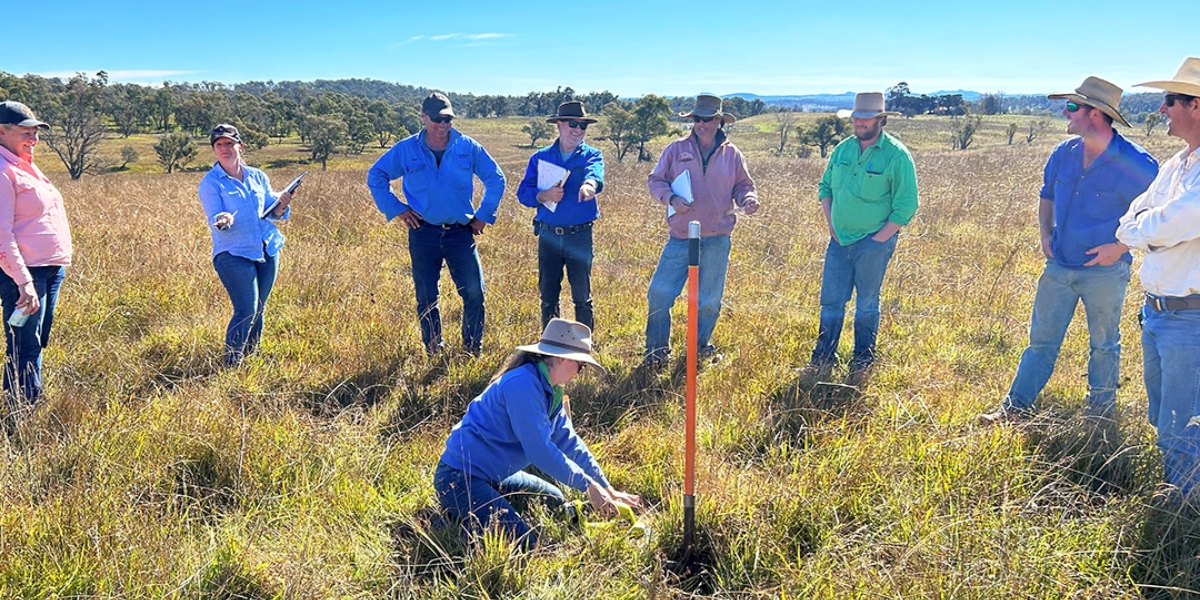A UNE project is teaching farmers how to avoid overestimating feed availability this summer.
With a hot summer on the horizon, the University of New England (UNE) is helping farmers across the Northern Tablelands of NSW to drought-proof their properties and minimise impacts of the next big dry.
To do this, pasture coach and project officer for the Drought Resilient Pasture and Landscapes (DRPL) project, Jaimi-Lee Edwards, is mentoring local producers to ensure they are equipped with the knowledge to effectively assess pastures, create feed budgets, and use cutting edge tools to accurately predict weather conditions six months in advance.
Now half way through the project, Jaimi-lee says participating graziers are honing their skills just in time for temperatures to rise.
“We have a number of graziers from several properties across the region out in their paddocks working to determine their feed availability, which can be difficult to do without the correct knowledge,” she says.
Initially, Jaimi-lee observed participants would overestimate the green content of their pastures.
“This is quite easy to do, because the dead herbage is often at the base of the plant, and out of site is out of mind,” she says.
“Because of the higher water content, the green component also looks to be more than what it really is, because we express pasture on a dry matter basis.”
To show this to participants, the project team cut pasture samples in June of this year and sorted the green from the dead components. These were then dried in an oven.
They found the green component of pastures on participants’ properties were typically made up mostly of water, leaving just 33 percent as dry matter.
Meanwhile, the dead component typically had only 36 percent water, leaving 64 percent dry matter.
“The good news is that once aware of these pitfalls, members of the coaching groups greatly improved their estimates of the green component of pastures.”
Coaching group members are also making the most of Ag360, a free online platform that provides an estimate of the green component.
“This is important, because Ag360 also helps you forecast for pasture and livestock performance during the coming six months, based on weather data relevant to within 5km of the property location,” Jaimi-lee says.
“I would strongly encourage anyone interested in improving resilience on their properties to create a free account and begin planning for the future.”
The DRPL project will wrap up in mid-2024, and will result in a range of helpful and permanent resources that graziers can access to ensure they are adopting resilient practices.

